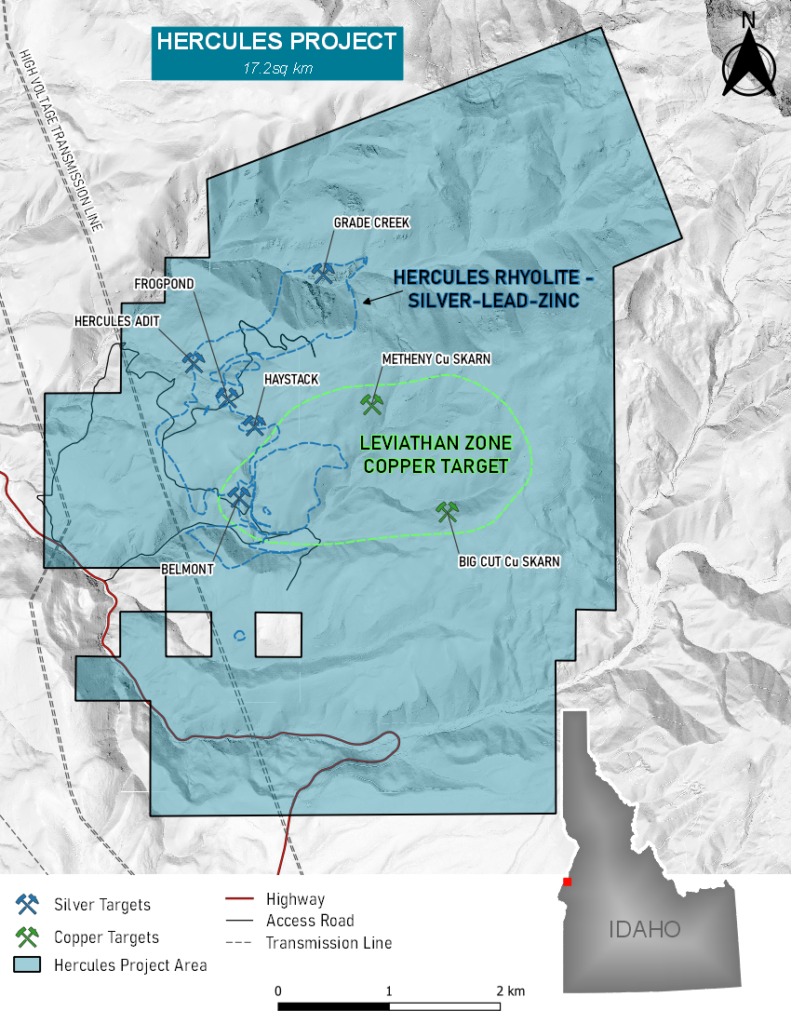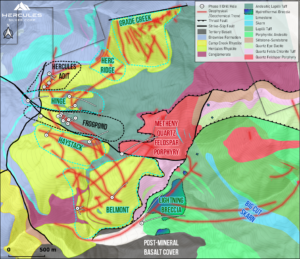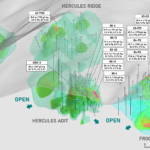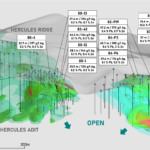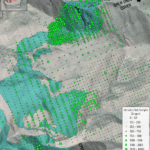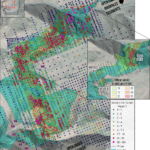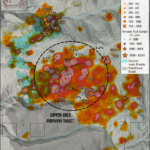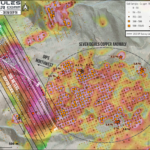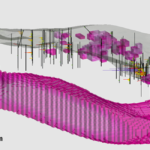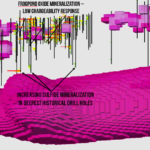The November 2022 Phase I drill program was designed to test and verify historical drilling assays as well as gain the geological and geotechnical information needed to support a Phase II drilling campaign in early spring of 2023.
The program consisted of infill and step-out holes at the Frogpond and Hercules Adit Zones with additional step-out holes to test open zones with little to no prior drilling.
A total of 1,995 feet in 9 drill holes was completed, with several holes bottoming in mineralization, and high-priority areas were tested within the Frogpond and Hercules Adit Zones for potential inclusion in future resource estimates. (See Feb 28 NR).
Highlights of the program include:
- Strong grade over multiple significant intervals, including drill hole HER-22-01, the first hole of the program, which intercepted 38 meters of 353 g/t Ag, 0.64% Pb, 2.28% Zn and 0.16% Cu (487 g/t AgEq), beginning at a shallow depth of 26 m depth in first drill hole, HER-22-01.
- HER-22-01 included a higher-grade intercept of 4.57 m grading 791 g/t Ag, 1.25% Pb, 4.06% Zn and 0.18% Cu (1,021 g/t AgEq) starting at 29 m.
- HER-22-07 intersected 44.2 m grading 224 g/t Ag, 0.32% Pb, 0.38% Zn and 0.09% Cu (258 g/t AgEq) starting at 1.5 m.
- Drilling grades significantly exceed grades sampled at surface, supporting the concept of potential supergene enrichment of mineralization below surface.
- Confirmed the presence of a high-grade shoot (the P-19 Shoot) at the east end of the Frogpond Zone; open at depth to the east.
- Confirmed the presence of shallow, high-grade mineralization at Frogpond and Hercules Adit Zones, with additional follow-up planned for Phase II.

